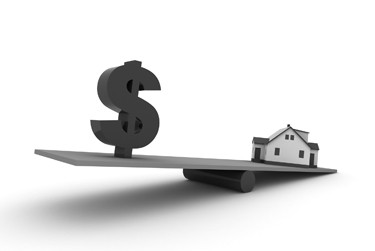It’s no secret that Australians have some of the largest houses in the world.

When you place these figures in a broader content and consider some current downsizing trends – as well as the rise in single person households – it makes you wonder if Australians are starting to embrace smaller homes.
The stats
Recent research from Commsec showed that in the past year the average floor space of a newly built home has increased 0.7 per cent to 231 square metres.
Second only to the US whose houses are 10 per cent bigger than ours on average, Australian homes are 7 per cent larger than our New Zealand neighbours’ and 10 per cent larger than in Canada.
While our houses are 10 per cent bigger than twenty years ago and 30 per cent larger than what they were in 1867, the current figure is actually down from our record of 247.7 square metres, which was recorded in 2008-2009.
And interestingly, while there has been a slight increase in house size in the past year, our apartments are getting smaller. With an average floor space if 131 square metres, this is almost a 9 per reduction from 2004-2005 when the average size was 140 square metres.
Alongside the common benefits of a reduced mortgage, reduced upkeep and cheaper utilities, people are starting to go smaller for a number of reasons, as we can see from several downsizing trends currently at play in Australia, which we have outlined below.
1. Sustainable property
As our society becomes increasingly environmentally conscious, the demand for sustainable housing is growing. While still modern and comfortable, these houses have a green, thoughtful and efficient design, use recycled or sustainable building materials, aim to eliminate or reduce a carbon footprint during construction, foster a community feel and don’t take up more space than they need to.
An example. The designer takes everything not necessary out of the equation in order to reduce space and improve efficiency. This included, for example, a shared laundry instead of individual laundries and a communal bicycle storage room instead of a garage. With no air conditioning, these apartments rely on the building’s thermal efficiency and simple ceiling fans to keep cool. Extras could include a community vibe with a shared veggie garden on the roof as well other shared facilities.
As sustainable building continues to grow in popularity, we should expect to see a reduction in houses that are big for the sake of being big, as there is no use for unwanted space in sustainable design.
2. Tiny houses
Taking off in the US after proving to be a viable housing option following Hurricane Katrina, the tiny house movement has hit Australian shores and quickly gained a loyal following. Tiny houses are typically around 2.5 x 7 metres in size, can be completely off the grid and maximise every inch of cleverly designed space. They generally consist of a kitchen, bathroom, living area and sleeping loft and in Australia are often mounted on wheels to overcome current council building restrictions.
People have embraced this trend in order to lead a minimalist lifestyle and be mortgage free, with tiny homes costing a fraction of the price of a regular house. In Australia, tiny houses seem to be popular with those entering the market for the first time as well as retirees. They’ve also been marketed as an ‘in between’ home, where people can live while saving for a deposit on a regular house.
The tiny life is certainly not limited to these groups though. Many have simply embraced the trend after realising that perhaps we don’t actually need that much space after all.
3. Granny flats
Changes to legislation in the past ten years has fuelled demand for and construction of granny flats in Australia, with accommodation ranging from modest studios to multi-bedroom mini-homes.
Homeowners in granny flat friendly states – and in Sydney in particular – are taking advantage of the demand for comfortable and affordable rental accommodation in close proximity to the CBD, and benefiting from extra income from leasing one out.
Those living in granny flats – commonly students, single people, young adults saving for a deposit and, of course, grannies – seem to be willing to compromise on a bit of space to take advantage of affordable accommodation close to the CBD.
All Australian states except for South Australia, Queensland and Victoria now allow homeowners to generate income from a secondary dwelling on their land.
4. Baby boomers downsizing to apartments
While empty nesters downsizing from their family homes into smaller apartments is nothing new, the trend continues. Alongside traditional retirement villages, many baby boomers are opting to move into comfortable apartments, allowing them to be closer to family and facilities in the city.
The demand for apartment living has seen an apartment construction boom in our capital cities in recent times, with concerns that we could have an oversupply in a few short years. In the right areas, apartments continue to be a popular choice for investors because of this demand and other benefits such as the extra depreciation they can claim from common property.
5. Affordability
The rising price of property in our capital cities – Sydney and Melbourne in particular – is something we hear about regularly in the media. Those who can afford to buy in the city as owner occupiers are often compromising by going smaller. This might mean for example purchasing a studio apartment instead of a one bedroom unit or a townhouse instead of a standalone house, due to the lower and more affordable price tag.
As Sydney and Melbourne continue to become global cities it will be interesting to see if this trend grows and if we take the lead from larger cities such as London, New York, Barcelona or Paris, where small living spaces are standard.
Bradley Beer
bmt-insider.bmtqs.com.au
